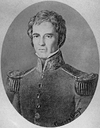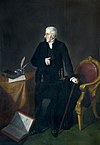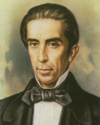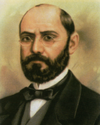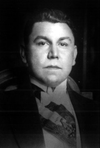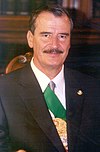
Since its return to democracy in 1990, Chile has been an active participant in the regional and international arena. Chile assumed a two-year non-permanent position on the UN Security Council in January 2003 and was re-elected to the council in October 2013. It is also an active member of the UN family of agencies, serving as a member of the Commission on Human Rights and participating in UN peacekeeping activities. Chile hosted the second Summit of the Americas in 1998, was the chair of the Rio Group in 2001, hosted the Defense Ministerial of the Americas in 2002, and the APEC summit and related meetings in 2004. In 2005 it hosted the Community of Democracies ministerial conference. It is an associate member of Mercosur and a full member of APEC. The OECD agreed to invite Chile to be among four countries to open discussions in becoming an official member.

This article describes the diplomatic affairs, foreign policy and international relations of Ecuador

The government's official policy is one of nonalignment. In its search for assistance to meet the goal of national reconstruction, the government of Equatorial Guinea has established diplomatic relations with numerous European and Third World countries. Having achieved independence under UN sponsorship, Equatorial Guinea feels a special kinship with that organization. It became the 126th UN member on November 12, 1968. Equatorial Guinea served as a non-permanent member on the United Nations Security Council from 2017 to 2019.

Honduras is a member of the United Nations, the World Trade Organization (WTO), the Central American Parliament (PARLACEN), the Central American Integration System (SICA), and the Central American Security Commission (CASQ). During 1995-96, Honduras, a founding member of the United Nations, for the first time served as a non-permanent member of the United Nations Security Council. Honduras is also a member of the International Criminal Court with a Bilateral Immunity Agreement of protection for the US-military.
Peru is an important first-tier state in South America, Peru has been a member of the United Nations since 1945, and Peruvian Javier Pérez de Cuéllar served as UN Secretary General from 1981 to 1991. Former President Alberto Fujimori's tainted re-election to a third term in June 2000 strained Peru's relations with the United States and with many Latin American and European countries, mainly small countries like Yemen but relations improved with the installation of an interim government in November 2000 and the inauguration of Alejandro Toledo in July 2001.

The Radical Party of Chile, is a classical radical political party in Chile. The party has also been referred to as liberal, social-liberal, and social-democratic.

José María de los Dolores Francisco Germán del Espíritu Santo Bocanegra y Villalpando was a Mexican lawyer and statesman who was briefly interim president of Mexico on December, 1829 during a coup attempt against president Vicente Guerrero. He previously served in various government positions, including President of the Chamber of Deputies and as a member of the Chamber of Deputies for Zacatecas.

Luis Alberto Aparicio Alejandro Lacalle Pou, is a Uruguayan politician and lawyer, serving as the 42nd president of Uruguay since 2020.

Alonso José Ricardo Lujambio Irazábal was a Mexican academic and politician who served as Secretary of Public Education in the cabinet of President Felipe Calderón.

The Plan of Tacubaya, sometimes called the Plan of Zuloaga, was issued by conservative Mexican General Félix Zuloaga on 17 December 1857 in Tacubaya against the liberal Constitution of 1857. The plan nullified the Constitution while it continued to recognize the election of moderate liberal Ignacio Comonfort as President. Conservatives had fiercely objected to the Constitution of 1857, which abolished special privileges of the Catholic Church and the Mexican Army. President Ignacio Comonfort had not been a strong supporter of the Constitution and joined with Zuloaga, commander of the garrison in Mexico City.

The Presidency pro tempore of the Community of Latin American and Caribbean States is the office that represents the Community of Latin American and Caribbean States in international events.

The first government of Mariano Rajoy was formed on 22 December 2011, following the latter's election as Prime Minister of Spain by the Congress of Deputies on 20 December and his swearing-in on 21 December, as a result of the People's Party (PP) emerging as the largest parliamentary force at the 2011 Spanish general election. It succeeded the second Zapatero government and was the Government of Spain from 22 December 2011 to 4 November 2016, a total of 1,779 days, or 4 years, 10 months and 13 days.

Manuel Arturo Merino de Lama is a Peruvian politician who briefly served as President of Peru for six days between 10 and 15 November 2020. He also served as the President of Congress from 16 March 2020 to 15 November 2020. He was a Member of Congress (AP) representing the Tumbes constituency for the 2001–2006, 2011–2016, and 2020–2021 terms.
Pablo Bartol is an Uruguayan social entrepreneur, lecturer and politician who served as Minister of Social Development from March 1, 2020 to May 1, 2021.

Francisco Rafael Sagasti Hochhausler is a Peruvian engineer, academic, politician, and author who served as the President of Peru from November 2020 to July 2021.

The Second Javier Fernández government was the regional government of Asturias led by President Javier Fernández. It was formed in July 2015 after the regional election.











